

JULY INDIAN LINK SYDNEY • MELBOURNE • ADELAIDE • BRISBANE • PERTH • CANBERRA Level 24/44 Market St, Sydney 2000 • GPO Box 108, Sydney 2001 • Ph: 18000 15 8 47 • email: info@indianlink.com.au FREE JULY 2017 • info@indianlink.com.au • www.indianlink.com.au PERTH WINNER OF 20 MULTICULTURAL MEDIA AWARDS Increasing Diversity Census 2016 Increasing Diversity Census 2016










































































































































































































































































































































































































































































































































































































































































































































































































































































































































































































































































































































































































































































































































































































































































































































































































JULY www.indianlink.com.au A FA MILY HOME WITH REAL VALUE FOR $210,950 The Richm d PLUS Pick y r Package! CHOOSE ONE OF THESE BONUS PACKAGES AT NO ADDITIONAL COSTAVAILABLE EXCLUSIVELY TO THE RICHMOND FOR A LIMITED TIME ONLY. Be spoilt for choice with a European Appliance Upgrade Also included gemmill.com.au Harjit Dhillon (Finance) 0431 102 192 Sachin Dua (Builder) 0450 500 284 LIMITED TIME ONLY Internal Finishing Package 1 Kitchen & Bathroom Package 2 Indoor & Outdoor Living Package 3 • Tiles • Carpets • Blinds • Lighting Package • Stone Benchtop to kitchen, scullery, ensuite and laundry • Overhead cabinets in kitchen • Alfresco stacker doors • High ceilings to alfresco • Outdoor Kitchen with BBQ 3 Ducted reverse cycle air conditioning 3 30c high ceilings throughout 3 Stone benchtops to kitchen 3 900mm kitchen appliances –rangehood, stove and oven 3 Soft closing drawers and doors to kitchen and bathrooms 3 Mirrored robe doors 3 NBN 4 point pack 3 170 ltr 6 Star heat pump hot water system 3 Bluepine roof timber 3 Glass shower screen doors With Big Value Inclusi s
INDIAN LINK
PUBLISHER
Pawan Luthra
EDITOR
Rajni Anand Luthra
ASSISTANT EDITOR
Harshad Pandharipande
CONTRIBUTORS
Saroni Roy, Usha Ramanujam Arvind, Farzana Ahmad, Frankey Gerard Fernandes, Nanditha Suresh, Grahak Cunningham, Sargun Bhatia, Vandana G, Y ogendra Bhatnagar, Auntyji
ADVERTISING
WA Sales Manager

Ram Naidu 0435 581 571
National Sales
Vivek Trivedi 02 9262 1766
ADVERTISING ASSISTANT Charuta Joshi 02 9279 2004
EDITORIAL ASSISTANT
Beheshta Wasseh
Indian Link is a fortnightly newspaper published in English. No material, including advertisements designed by Indian Link, may be reproduced in part or in whole without the wri en consent of the editor. Opinions carried in Indian Link are those of the writers and not necessarily endorsed by Indian Link. All correspondence should be addressed to
Indian Link
Level 24/44 Market St, Sydney 2000 or GPO Box 108, Sydney 2001
Ph: 02 9279-2004 Fax: 02 9279-2005

Email: info@indianlink.com.au


Lynching is the new low in India
BY PAWAN LUTHRA
Pehlu Khan was lynched by a group of “cow vigilantes” in early April. The tragic saga of the 55-year-old man being beaten to death on a highway was captured on video, and millions got to see the barbaric encounter. The police have yet to make any substantial progress in bringing the leaders of this inhuman mob to justice.
Lynching is a public spectacle often used to terrorise a minority group into submission. Be it the Ku Klux Klan in the US or the terrorism inflicted by “cow vigilantes” against the Muslims and the Dalits in India these days, it is a terrifying message to the minority that the law is powerless to stop mob lynching.
According to Human Rights Watch, since May 2015, a vigilante campaign against beef consumption has led to the killing of at least twelve Muslims, including a 12-year-old boy, in incidents of mob violence.
It all started when Mohammed Akhlaq,
a resident of Bisada village in UP’s Dadri district, was lynched by a mob for storing what the assailants deemed was beef in his freezer. It has only gotten worse since then and the latest incident in which a 16-year-old Muslim boy Junaid, on his way back from Eid shopping, was beaten and thrashed by a lynch mob in a railway compartment. The altercation, reportedly, was about seats but before he was killed, Junaid and his brothers were called beef-eaters and anti-nationals by their assailants.
The rise of this type of vigilantism can be traced back to the election campaign of the BJP in 2014. Narendra Modi allowed the genie of communal intolerance out of the bottle when he then said, “We’ve heard of the Green Revolution, we’ve heard of the White Revolution. But today’s Delhi government wants neither; they’ve taken up arms for a Pink Revolution,” he had said, presumably evoking the pink colour of beef. “Do you want to support people who want to bring about a Pink Revolution?” Modi put the issue of cow slaughter and beef export on the table.
One of India’s strengths is its secularism, enacted in 1976 with the 42nd Amendment of the Constitution of India. But the recent rise of militant Hindu
nationalism is threatening this very fabric of the country.
The backlash against the lynch mob and the toothless law was evidenced by recent rallies in India. They had no political backing; rather, it was a private citizen, Delhi-based film-maker Saba Dewan, who helped rally citizen protests against these vigilantes. What was meant to be a protest at Jantar Mantar in Delhi, spread across the country and even in Canada, United Kingdom and the United States.
Prompted by this rising opposition, PM Modi did speak out against these lynchings when he announced “killing in the name of cow worship is not acceptable”.
What the Prime Minister and his senior team need to do is put their words into action and ensure that the wheels of justice move swiftly against those antinationals who kill in the name of caste and religion. He can order his party to stop pushing the cow slaughter agenda. He can stop this terrorism rather than choosing to remain tight-lipped about it. India is at a secular crossroads - the choice it makes will determine whether the belief is in the true Hindu doctrine of ahimsa (non-violence), or a different form of Talibanism.
JULY INDIAN LINK
editorial
Level 31, 264 George Street (Australia Square), Sydney NSW 2000 Ph: 02 9241 5643 Email: remit@sbisyd.com.au Visit us @ www.sbisyd.com.au • Money Transfers to India
Competitive & Guaranteed Exchange Rates
Efficient & Secure online process
Convenient registration free of cost at all Australia Post Outlets
Trust & Confidence of State Bank of India New Applicants registering in the month of July 2017 and citing the promo code” JUL17” at the top of their application form will receive a Coles Gift Voucher worth AU$25 from SBI Sydney (*Conditions apply) Special Promotional Offer
Cover photo: White Wolf
•
•
•
•
Making sense
ANAND LUTHRA and HARSHAD PANDHARIPANDE
By now, you probably know the Census 2016 finding that Indians were the second biggest group of migrants, after the Chinese, to have arrived in Australia since 2011.
Some 163,000 people arrived here from India in the last five years in search of greener pastures.
In fact, the Indians and the Chinese have been at the forefront of an Asian influx into Australia that overtook migration from Europe for the first time in the last five years. According to data released on 5 July, among the recent arrivals (2007-2016) in Australia, Indians were at the top at 13.7%, ahead of the Chinese who came in second at 13.3%.
The census revealed quite a few other equally interesting India-related facts. For instance, even as ‘No Religion’ became the second biggest faith group in Australia, Sikhism and Hinduism were some of the fastest growing religions in the country since the last census in 2011.
All these make for compelling statistics and point towards a spike in the aspirational barometer of Indians. They show what Australia means to Indians.
But what if we turned that around and asked ‘What do Indian migrants mean to Australia?’
How will we enrich Australia’s culture?
Why did many of us, religiously inclined that we care, go for the ‘No Religion’ option? How can Hinduism and Sikhism contribute to multiculturalism in Australia?
It is with these questions that we dissect the census findings. With a mix of statistics and opinions of community members - fresh off the boat or second- or thirdgeneration Indian Australians - we bring you a comprehensive, three-part reading of everything to do with our community in Census 2016.
Sikhism among fastest growing religions
The fastest-growing religious group since 2011 in Australia was Sikhism, that grew by 74.1%. The proportion of Sikhs in the overall Australian population was 0.1% in 2006, but it rose to 0.5% in 2016.
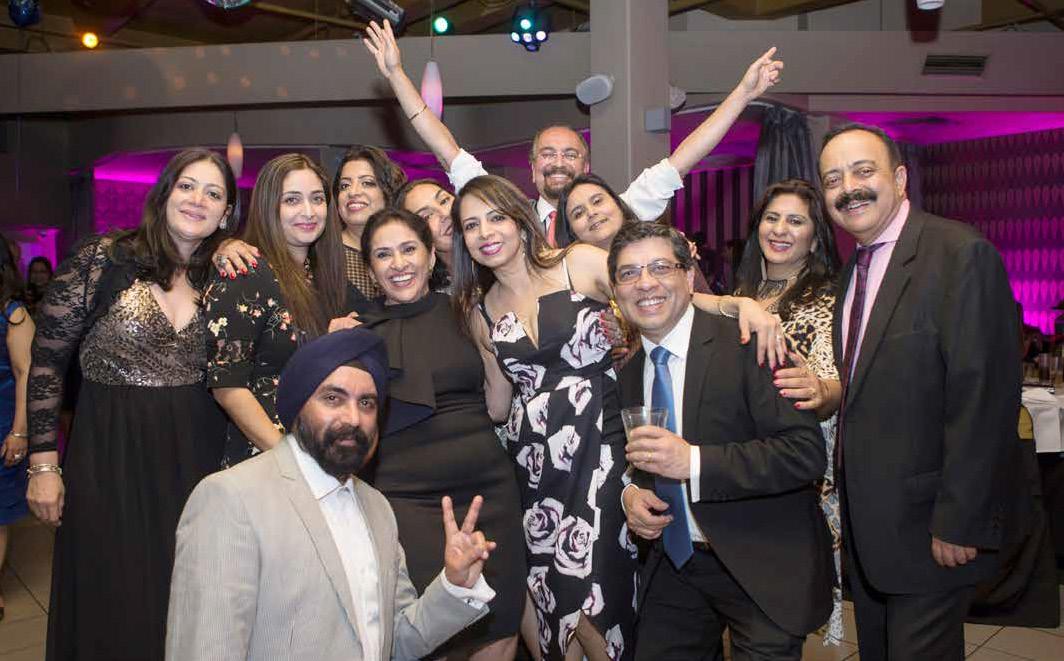
With 126,000 followers – up from about 72,000 five years ago and 26,000 in 2006 – Sikhism is now the fifth largest religion of the country, after Christianity, Islam, Buddhism and Hinduism.

It also means that Sikhism has grown over 500 per cent in Australia in the last ten years.

In the 2006 census, Sikhism was not even among 20 religions recorded in Australia.
Victoria is home to 52,762 Sikhs, followed by New South Wales (31,737), Queensland (17,433), Western Australia (11,897), South Australia (8,808) and Canberra (2,142).
JULY www.indianlink.com.au
industriousness,
cover story
Northern Territory and Tasmania have a smaller population of under 700 Sikhs each. The Sikhs pride themselves on their
a community characteristic that is becoming well-known here in Australia. Tejinder Singh, the Sikh taxi driver
Caption
From religion to language to multiculturalism, RAJNI
look at what the Indian community can take away from Census 2016
Jatinder Kaur: Sikhs will play an active role in civic society
In Victoria, the ‘typical’ migrant is India-born
Photo: Ravinder Singh Jabbal
emerging religions
generations of Australians
of the census

in Darwin who spends his Sundays cooking and feeding the hungry on the streets, and Harman Singh, the Sikh youth in New Zealand who removed his turban to save a bleeding child, are but two examples that have sent the message out Sikhism’s inherent concept of seva, or service.
Ajmer Singh Gill, President of the National Sikh Council and Director of the Multicultural Communities Council of NSW, says, “Sikhs get out there and do what they can. They are not dole bludgers.” He adds, “Sikhs are very supportive of other communities, and friendly, sociable people, who accept others as they are.”
Speaking about Sikhs being seen as ‘the others’ in Western countries, Gill says it has been a definite problem with Sikhs because of their high visibility. “We’ve been seen as ‘Muslim’ or as ‘terrorists’ simply because of our beards and turbans, and as a result of some acts that some Muslims have performed. But we are addressing it by taking pains to be involved with the community. I urge migrant Sikhs to know more people and take the first step in making friends, so that the locals understand us and see that we are really not that different.”
Brisbane social worker Jatinder Kaur, a board advisor of the Sikh Helpline, is excited to see the numbers relating to her community. The Sikh migrants in these countries have played a positive, proactive role, she told Indian Link.
“In the UK - where I come from and where the community is now half a million strong - and in Canada, research shows that Sikh migrants have very strong values, a very strong sense of work ethic in particular. They are hard-working, lawabiding citizens, charitable, and active in the community.”
As a turban-wearing Sikh herself, and the only one at university when she arrived here
22 years ago, she is very pleased to see the community grow in profile.
“I anticipate that there will be more positive contribution and many more positive role models here as well, playing an active role in civic society such as putting their hand up for elections to local councils and other community initiatives and work alongside other faith communities and Australia’s indigenous community.”
Most of the Sikhs that have arrived in Australia in recent years have been students. Navpreet Singh is one of them.
The 26-year-old arrived here in 2013 as an international student. He is now nearing the completion of his Bachelors of Business degree, and has supported himself with jobs in customer service. His family in Haryana’s Karnal city have helped out occasionally.
“I’ve really enjoyed my studies here,” Navpreet tells Indian Link. “Yes there were problems initially with my preferred course in IT so I had to change, but there’s been no looking back since. I’ve loved the different ways of learning to what I was used to in India, and the practical aspects such as going down to a real business and analysing their processes,” he adds.
As a turban-wearing Sikh, did he encounter any problems outside of college?
“Not once,” he says. “It’s been easy to get work, and I’ve been able to manage it well alongside study. I’ve made some decent friends, and have been living in a peaceful suburb.”
“As a turban-wearing Sikh, I can say with confidence that I have had no problems whatsoever in this country.”
Having just moved to Melbourne with his bride, Navpreet is now planning to do a Masters degree.
As an upwardly mobile young Sikh, Navpreet is representative of the aspirational levels in his community.
Hinduism second fastest growing religion

Although one of the smaller belief systems in Australia, Hinduism has seen a rapid rise here in the last decade. From 0.7% of the population in 2006, and 1.3% in 2011, it rose to 1.9%, or 440,300 individuals out of 24.4 million, in 2016. This translates to a rise of 300 per cent.
“For centuries, Hinduism has been one of the most tolerant religions. It has nurtured all religions. It has actually spawned at least three other world religions, Buddhism, Jainism and Sikhism.”
Agar adds that Hinduism has historically welcomed other religions such as Zoroastrianism and Judaism to flourish alongside it and giving safe haven to those fleeing persecution in other lands.
“Hindus will follow the same tradition here in their adopted country - the tradition of acceptance of, and tolerance towards, all other religions and ways of thinking. Australia is a great multicultural country. It is fertile soil already for diversity: Hinduism will simply act as fertiliser to enhance this diversity,” Agar says.
Hindus are a peaceful, accommodating people and don’t hold extreme views of any kind, points out Hindu priest and retired academic Jayant Bapat OAM from Melbourne He adds, “We are willing to mix with others easily and love to share our culture. There are more than 20 temples in Melbourne alone, and when they each celebrate their festivals, they attract nonHindus who become aware that we are a tolerant religion.”

and tolerance
Talking
What about the fact that the world at large is not dealing well with “otherness” at this point in time? Would Hindus in Australia ever face such a backlash?
“The more we mingle with mainstream people, the more they will realise that we come from a huge multicultural society
JULY INDIAN LINK
about how Hinduism can contribute to Australia, Nihal Agar AM, a Sydney-based Hindu community icon, says,
Nihal Agar: Hindus here follow traditions of acceptance
INDIAN LANGUAGES SPOKEN AT HOME
Hindi and Punjabi have made it to top ten languages spoken in Australia
Hindi 159,652
Punjabi 132,496
Tamil 73,161
Bengali 54,566
Malayalam 53,206
Gujarati 52,888
Telugu 34,435
Marathi 13,055
Kannada 9,701
Konkani 2,416
Sindhi 1,592
Oriya 721
Kashmiri 215
INCREASE IN HINDI SPEAKERS FROM LAST CENSUS
Hindi 0.5 to 0.7%
Punjabi: 0.3 to 0.6%
HINDI SPEAKERS ACROSS STATES
NSW: 67,034
Victoria: 51,241
Queensland 18,163
South Australia 7,310
Western Australia 10,747
Tasmania 639
ACT 3,646
Share of each religion
ourselves with many different religions and languages, and are, therefore, used to accepting ‘otherness’. In fact, I am confident that if there were ever to be such a problem in Australia, we would be able to contribute in solving it,” Bapat says.
In another interesting fact that mirrors the increase in migration from India, Hindi and Punjabi figure in the top 10 languages spoken across Australia.
No religion becomes 2nd largest group

Nearly 30 per cent of Australians claimed in Census 2016 that they identified with no religion.
The number of Christians in total still makes up 51 per cent of the population, but this is much less than the 88 per cent in 1966 and 74 per cent in 1991.
Many people saw the rise of ‘No Religion’ coming, including well-known Australian social psychologist and social researcher Hugh Mackay.
In his book Beyond Belief (2016), he observes that Australians are steering away from institutionalised religion. He
lists various factors for this, including the corporatised nature of contemporary religion, and the growth of science.
But the need for spiritualism persists, he notes, as he observed trends in the rise of a different kind of spirituality - one not restricted by institutions or guidelines. These include yoga, secular meditation, pilgrim walks, music and the like.
Mackay predicts that most people are Spiritual But Not Religious (SBNR) and that there will be ‘SBNR’ boxes on the census in the future.
Among the Indian community in Australia, too, spiritualism is on the rise. Sunny Singhal from Rhodes NSW says his father claims to be Hindu and my stepmother Muslim. He has an uncle who is a Christian minister and others in his extended family are Jewish and Buddhist.

“Amongst all of that, and my observation of the world, I have come to see that people are people regardless of religion - afflicted by greed, selfishness, anger, jealousy and the like,” he says. “Religion by itself does nothing to ameliorate these tendencies. It may provide some people a pathway, making them a better person, but that can be gained from a simple observation of humanity and the self,” he adds. Religion can often appear to serve as an additional layer of self-righteousness.
“I do not believe the path to God lies in an organisational structure, for there is no distance between me and my maker except what I put there through my fallibility, forgetfulness and loss of focus,” Singhal adds.
Those from within the community who ticked on No Religion had various reasons to do so. Aneeta Menon of Toongabbie NSW says, “First, there were concerns about the demographic data being stored from the census. Given the mildly-Dystopian times we live in, I didn’t feel any reason to be recorded as an “Other” somewhere.”
Menon says that she doesn’t feel part of
any organised religious movement. “Any representations of organised Hinduism I have seen in recent times have been completely at odds with both my personal beliefs as well as what my understanding of Hinduism is,” she adds.
There were also people like Malika Gulati of Waitara NSW who did opt for No Religion, yet are not irreligious. Rather, they have a respect and appreciation for all faiths.
“I’m not a religious person. But I am spiritual,” says Gulati. “I have been brought up in the Hindu tradition, but I don’t know if I really identify myself as Hindu. At school, especially in the later years, I did quite like the atmosphere at chapel - I loved its peaceful and calming vibes. Recently, upon hearing the news of a loved one’s passing in India, I walked into the gurdwara close to my home and found that very comforting.”
Dipanjali Rao of Brunswick West in Victoria says she was brought up in a very secular family, where god or religion played no part. “God was invented as a way of explaining natural phenomena, and science has explained a lot on that front,” she says. However, she adds that people should be free to believe in whatever force they choose to, ‘as long as it doesn’t impinge on other’s choices, like marriage equality or abortion.’
Is Australia more Asian than European?
For the first time, more migrants are arriving in Australia from Asia - mostly India and China - rather than from Europe. The 2016 census has revealed that 40 per cent of the overseas-born population were born in Asia, compared to about a quarter in 2001.
“The census shows Australia is more culturally diverse than ever before with almost half of Australians either born overseas, or with at least one parent born overseas,” said David Kalisch of the Australian Bureau of Statistics in a media release.
Also, given the relatively recent increase in Asian migration, those born in Asia had a younger age profile with a median age of 35 years. By contrast, people born in Europe had a median age of 59 years.
Unfortunately, some headlines in the recent days have suggested that Australia is becoming more and more Asian or Islamic and that the social change brought by migration is threatening an Australian identity or way of life.
“The reality,” says Tim Soutphommassane, Race Discrimination Commissioner, “is more sober. While it is true that the majority of migrants who now settle in Australia are from countries in Asia, it is untrue to suggest that the population in general has become more Asian than European in background. The UK, in fact, remains the largest single source of residents born overseas.”
Soutphommassane was speaking at a Diversity Arts Australia conference in Sydney.
Four of the five most common ancestries reported in Sydney are Australian, Irish, Scottish and English.
“And while Muslims living in Australia may have grown in number, they represent 2.6 per cent of the population. This is up from 2.2 per cent in 2011. It is a stretch to suggest their numbers have soared,” Soutphommassane adds.
In a nutshell, what these results mean is that Indian-origin Australians are increasing in number and the trend of migration to Australia is likely to continue, at least in the near future.
As their numbers increase, Indians migrants will look to make a significant contribution to Australian society, and have a greater participation in the mainstream.
Coming from a diverse and multicultural culture, showing adaptability and resilience and not tied down by cultural and religious norms, we could be the template for the perfect migrant in this country of migrants.
JULY www.indianlink.com.au
coverstory
Jayant Bapat: Indians thrive in their own multiculturalism
Religious affiliations and age




top countries by birth
Shift in affiliations
Census data reliable, says ABS
The 2016 Census was conducted with a new ‘digital rst’ approach, that centred on the use of a recently established Address Register.
However, on census night, there was a distributed denial of service (DDoS) attack from another country, shutting down the online forms for more than a day. Then, an independent panel of eminent Australian and international statisticians, academics, and state government representatives was established to
Where migrants live
independently review and assure the quality of statistical outputs from the 2016 Census.
Overall, the panel found 2016 census data to be t and having comparable quality to previous Australian Censuses and International Censuses. The panel concluded that 2016 census data can be used with con dence.
Australian Statistician David W Kalisch said, “The 2016 Census had a response rate of 95.1 per cent and a net undercount
of 1.0 per cent, meaning the quality is comparable to both previous Australian Censuses and Censuses in other countries, such as New Zealand, Canada, and the United Kingdom.”


“Sixty-three per cent of people completed the Census online, embracing the digital- rst approach and contributing to faster data processing and data quality improvements.
Kalisch said the Australian Bureau of Statistics undertook quality checks, including a thorough Post Enumeration Survey, to ensure the data can be trusted. “These quality assurance measures, and
a range of other factors, were considered and veri ed by the Panel,” he said.
Speaking to members of multicultural media on 5 July, Census General Manager Duncan Young and Census Director of Data Sue Taylor said that the ABS had compiled a huge amount of data over the course of the census. “Only a census can provide the information for the entire country, including small geographic areas and small population groups,” they said, and urged members of the public to nd out interesting and easy-to-understand details about their suburb, city community on the website www.abs.com.au.
JULY INDIAN LINK

















































JULY www.indianlink.com.au THE ANSWER 300m 2 4 2 2 SUITS 15m FRONTAGE Packed with big name value: INCLUSIONS Render to Front Elevation 3kW Solar Power System WM SHR SHR FR DW Theatre 4.37 x 4.01 Activity 4.14 x 3.03 Living 5.50 x 4.67 Alfresco 4.30 x 7.90 25,09 0 13,390 R/HOOD GAS HP UBO Kitchen WC Bath Ensuite Entry WC WIR WIP Porch 28c 28c 31c 28c 28c 31c Ceiling 28c 28c 28c 28c Double Garage 6.09 x 6.19 Master Suite 4.03 x 4.11 Bed 4 3.00 x 4.09 Bed 3 4.09 x 3.00 Bed 2 3.05 x 4.09 Dining 4.59 x 4.50 Laundry e reverse cycle air conditioning (up to 10 outlets, 4 zones/1 constant) BEST SELLING DESIGN IN OVER 10 YEARS HUGE 300m2 $199,990* WITH SOLAR ON TOP benchtops to ensuite & bathroom JULY ONLY BONUS OFFER HURRY ENDS31stJULY P 12 Panel 260W High Efficiency System P 1 x 3kW Inverter P Battery Ready P Full Installation HURRY ENDS 31st JULY 3kW solar power system Render to front elevation essastone benchtop to kitchen and 30mm breakfast bar overhang, plus ensuite & bathroom Fully ducted Daikin reverse cycle air conditioning High ceilings to living area (31c) Rheem instantaneous gas HWS COLORBOND® steel roof, fascia, gutters & downpipes Westinghouse s/steel appliances Double vanity to ensuite 300mm x 300mm Porcelain floor tiling to bath/ensuite (non rectified) SUV garage 28c ceiling Mirrored sliding robe doors to minor bedrooms Laundry cabinet and trough with flick mixer tap H O M E S your home, your choice list of higher standard inclusions at redinkhomes.com.au Call Aman Dhuria 0412 169 069 redinkhomes.com.au DESIGN AND SALES CONSULTANT * Disclaimer: BRN 12049. Terms and conditions apply. Promotion is applicable to Perth Metropolitan area only, please enquire for pricing in surrounding areas. All images are for illustration purposes only. This package is not available with any other Redink Homes offers. For full terms and conditions visit www.redinkhomes.com.au. MANAGING DIRECTOR

JULY INDIAN LINK info@remit2india com www remit2india com * This offer is available for a limited period and to eligible customers only. This offer cannot be combined with any other offer. Also, customers having multiple accounts shall be subject to disqualification. The offer may be discontinued at any point in time, with or without prior notice to the customers. In case of any disputes, the final decision shall be that of Remit2India at its sole discretion. For detailed T&C, please refer to Remit2India website. # The Instant money transfer service is currently available for direct credits from any bank account in Australia into any account within the 28 listed banks in India up to a transaction limit of INR 1,00,000 per transfer. The Instant transfer is available subject to certain limits on the amount sent and also clearing mandatory compliance verification processes. ** Estimated international wire-transfer fee for bank transfers from Australia to India Remit2India - Money Remittance to India at an affordable price. Remit2India is a secure online money transfer service for NRIs to send money to India from United States, United Kingdom, Australia, Singapore, Canada, U.A.E., Hong Kong, Germany, Spain & other Euro Countries. The service allows NRIs to send money safely using wire transfer and ACH/Direct Debit. The money can be received in India through direct account credits. 1-800-859-876 To make sure you don't miss out, send money NOW. Use the code LINK50 if it's your first transaction with us. compared to bank wires on every dollar you send on your first transfer Staying away from family is difficult. Sending love to them isn’t. Instant# fee-free money transfers from Australia to India. Download on the Get it for App Store Android Limited Period Offers +
YOUR SAY
ALL ARE GIFTS, BUT NOT ALL ARE GIFTED
MOHAN DHALL’s column on ‘why it is important for us to accept that giftedness is a rare trait’ was retweeted several times.

Russel Warne @russwarne tweeted: This is the sort of thing @ NAGCGIFTED NAGCG should be tweeting: con dent, logically sound, and mainstream w/in the eld. Good work!
Jeanine@tuxchewfonz tweeted: Statements like this belittle the struggles gifted people experience.
Elizabeth Adams wrote: All students are graceful dancers – in their own style.
Jenny Sarrano wrote: Yes, I hate hearing this and I hear this often. People have no idea of the challenges of asynchronous development.







Grace Zell wrote: This saying should actually be ‘all children are special in their own way’ or could even be ‘all children have their own gifts’ which could be things that they are really good at without trying but not every child is academically advanced or ‘gifted’ with all the intensities and intuition and rapid connections that academically gifted kids have.
25 YEARS OF SRK IN BOLLYWOOD
‘Badshah of Bollywood’ Shah Rukh Khan celebrated 25 years in the Hindi lm industry recently. We asked our readers what their fav SRK dialogue is Mona Sharma wrote: Duniya mein kitni hai nafratein, phir bhi dilon mein hai chahatein. Mar bhi jaaye pyar waale, mitt bhi jaaye yaar waale, zinda rehti unki mohabbatein from Mohabbatein

Mona Sharma wrote again: Ammijaan kehti thi koi dhanda chota nahi hota aur dhande se bada koi dharm nahi hota from Raees
Rajni Luthra wrote: Woh sattar minute... from Chak De India really touched me
Nivedita Kunder wrote: Aaj ek hasee aur baant loon, Aaj ek dua aur maang loon, Aaj ek aansoo aur pee loon, Aaj ek zindagi aur jee loon, Aaj ek sapna aur dekh loon, Kya pata kal ho naa ho
Nivedita also had another favourite SRK dialogue: Kkkkkkkk Kiran!!
Charuta wrote: Kehte hai ki… agar kisi cheez ko dil se chaho to puri kayanat usey tumse milane ki koshish mein lag jaati hai
Pratiksha Kamat wrote: Bade bade deshon mein aisi chotti chotti baatein hoti rehti hain
Vivek wrote: Kabhi kabhi jeetne ke liye kuch haarna bhi padta hai... aur haar kar jeetne waale ko baazigar kehte hai
Harshad Pandharipande wrote: Rahul… naam toh suna hi hoga! Ruchi Pradhan wrote: Pyaar dosti hai.
LEAVING HOME… TO GO BACK HOME
JYOTI SHANKAR’s piece on Indian-Australian couple Ruchir and Santana, who decided to return to Jaipur, India, after living in Australia for 22 years, continues to resonate with our readers.
Surbhi Asawa wrote: You have chosen the best city too.
MAN UP, SPEAK UP
MEENAKSHI SEETHARAMAN wrote about Men’s Health Awareness Week in June, when men were encouraged to talk openly about their health needs Prabhu wrote: It is a nice article. It is important to start a discussion on men’s health issues.
SAY IT AGAIN
A SIKH WOMAN AS JUDGE
Palbinder Kaur Shergill, an Indian-origin Sikh woman, becomes rst turbaned Supreme Court judge in Canada

Chandra Kishore: Proud moment, congratulations
Shalom/Shaanti to all our Indian friends on this historic occasion of PM Modi in Israel NSW Jewish Board of Deputies


Nobody knows why he would commit such a thing like suicide. He was the type of person who had a big heart and he always offered help where he could Relative of Indian student Jagvir Singh, found dead in Melbourne

JULY www.indianlink.com.au
JAB NARENDRA MODI MET DONALD TRUMP
In their rst ever meeting, Indian PM Narendra Modi and US President
Donald Trump showed great warmth.
Chandra Kishore wrote: Nice hug!

Raka Mitra joked: Modi’s hug = Trump’s handshake


Krish Na wrote: Made for each other
AUSTISTIC KIDS SHOULD BE REMOVED FROM CLASSES: PAULINE HANSON

One Nation leader Pauline Hanson recently said autistic children should be removed from mainstream classrooms. Indian Link Radio presenter SAGAR MEHROTRA asked his listeners about their opinions on Hanson’s comments.
Jillian Abery wrote: Pauline Hanson has no idea about what she is talking about. I would bet that if a survey was taken, there (would be) more mainstream students who are disruptive in schools, than kids with autism. Every child with autism is different, which is why it is called “Autism Spectrum”. Often, they can bring joy and show compassion for others, which is more than can be said for PH. Enough with the bigoted discrimination. Mythili Iyer wrote: All can I think of about Pauline Hanson is that she is so callous, unkind and inconsiderate to even suggest that kids with some disabilities should be separated from the main stream class rooms. How heartless of her..!


Kulsoom Bint Abdul Fateh wrote: Absolutely disagree. Not only will they be more alienated from the mainstream, it is also a two-way street - everyday children won’t know how to react or work with autistic children. It is vital to for everyone to be inclusive so that when you go on to further education, or in the workforce, these skills learnt from a young age will allow everyone to work cooperatively.
Corrina Singh: She is just a rude person. My son is autistic and he goes to a special school. Hanson should just keep quiet.
Every now and then, we post images of monuments and forts and other such famous places in India to quiz our readers. And the readers are quick to answer!
Jillian Abery wrote: Jodhpur, Mehrangarh Fort. I am going there again in September.
Bhavana Bhatia Masand wrote: Jodhpur, Mehrangarh Fort
Rani RJ wrote: De nitely Mehrangarh Fort, Jodhpur
Anurag Lall wrote: Jodhpur And guess what, everyone was right!
FYI: The Mehrangarh Fort in Jodhpur in Rajasthan, one of the largest forts in India, was built around 1460 by Rajput king Rao Jodha, 125 metres above the city.

NATION OR ALIENATION?
PAWAN LUTHRA wrote on how the new, university-level English language test that has been proposed for citizenship is unfair and will make second-class citizens out of hardworking migrants.
Deen Parast wrote: When we Parsis came to India and were granted sanctuary by the good king of Gujarat Jadi Rana, my forefathers were asked to give up their Persian language, and instead learn and speak the Gujarati language. This was fair and common sense and our forefathers accepted it. As a result, we, their descendants, do not know Persian but only Gujarati (and Hindi and Marathi and English in later years). Migrants should be able to converse and understand the language of the country they migrate to. But a simpler English test, perhaps school level.
Karam Ramrakha wrote: In Fiji in 1966, when I stood for Legislative Council elections, I was astounded at the illiteracy among Indians and in particular the girls. Even the young ones who I had presumed were being sent to school. I was chagrined to note one sweet young lady, bejewelled like a Bollywood star, who could not count in English. This was important at election time, as the candidates were numbered. I see in India we have a struggle for a national language. Even today I meet Australians who migrated here in the ‘50s and ‘60s, continuing to speak their own brand of pidgin English. I believe that everyone should read, write and speak English in Australia. Not being able to speak the national language means that you are forming a sort of enclave (amongst yourselves). Indeed a citizen of Australia who does not speak English would always live with a handicap. After I took up the cause in Fiji, I was amazed at how quickly our people could adapt to English. After all being able to read, write and speak English makes you part of the mainstream. These are but my views.
WINTER SPICE
Many of you ‘liked’ our recipes for Cheesy Bread Pakoras - the best way to drive away the chills of winter.
Meenakshi S wrote: I wish someone made these for me right now
+ JOIN THE CONVERSATION
> LOG on to your own Facebook or Twitter account
> TYPE “Indian Link” into the search box at the top of the screen and click on the link that comes up


> CLICK ‘Like’ to join the Indian Link Facebook community or ‘Follow’ @Indian_Link on Twitter



From my family to yours, Eid Mubarak. Eid
ul-Fitr is a special day to join with family and friends
PM Malcolm Turnbull on Eid, 25 June

India is my home away from home… and although I am struck by the beauty of Dharamsala, Pune is my favourite city Steve Smith, Aussie cricket captain
We are really proud of the victory of @srikidambi in the Australian Open. I congratulate him for yet another wonderful win PM Modi on badminton player KSrikanth

JULY INDIAN LINK
QUEEN’S B’DAY HONOURS
SUSTAINABILITY HERO’S DIASPORA PASSIONS
Ashak Nathwani, AM
For signi cant service to the Ismaili community in Australia, to tertiary education in the area of sustainable design, and to engineering
Ashak Nathwani has become a Member in the General Division of the Order Of Australia (AM), this year.
“I feel absolutely blessed and humbled to be recognised amongst such pronounced people,” Nathwani told Indian Link. “It’s a very proud moment for my family and my community. I’ve received hundreds of congratulatory notes from people across the globe since (the announcement).”
Born in Kampala, Mr. Nathwani went to Aga Khan Primary and Secondary School and took a mechanical engineering degree from the University of Nairobi.
“When I came back to Kampala in 1972, everyone of Indian origin was forced to leave Uganda under the orders of Idi Amin. I had a Ugandan passport so I thought I could stay but they cancelled my passport and I became state-less! It wasn’t for my engineering degree but because I was a lecturer at the Uganda Technical College that I was allowed to enter Australia.”
With only 20 cents in his pocket, Mr. Nathwani landed in Australia as a refugee and worked with a couple of firms before he finally got a job at the leading engineering consultancy firm, Norman Disney & Young (NDY).
An Ismaili by heritage, Mr. Nathwani founded the Ismaili community settlement in Australia, giving it a formal structure. He led the establishment of community centres in Sydney, Melbourne, Brisbane, Adelaide and Perth, and presided over the arrangements for two visits by His
Highness the Aga Khan to Sydney, in 1979 and 1987.
Giving an account of the dreadful situation in Uganda, the exodus of the Ugandans to Australia and his arrival during the all-white Australian policy, Mr. Nathwani co-authored, with his wife, a book entitled Forty Years Journey: Trials & Tribulations of Ex-Ugandans in 2012.
“A non-white back in 1972 had to be a professional like a doctor, engineer or teacher to be in Australia, so we were rather welcomed. It was a challenging journey, but the Australian government and the Australian Council of Churches, organised hostels for us and helped us find jobs.”
Born to Gujarati parents, Nathwani has always had an innate fondness for the language and music of this community. He became a leading member of various Gujarati community events and frequently performs at the Navratri Festivals. In 2015, he also co-authored Early Gujarati Migration to Australia: A Pioneer’s Perspective, with Harshad Desai.
Extensively involved in engineering, sustainable architecture and design at NDY, Mr. Nathwani helped design iconic structures like the Sydney Olympic Stadium and the Aquatic Centre. He also collaborated in 2011 on the construction of 1 Bligh Street, Sydney, a skyscraper

THE HEALTH OF COMMUNITIES
Dr Mahomed Said Patel, OAM
For service to medicine, particularly to the eld of epidemiology
which has 6 green stars and many awards for its sustainable design.
Because of his continued passion for sustainable design, he led the NDY environment discipline and retired from NDY in 2011 after 33 years, to pursue an academic career at the University of Sydney. Here, he took on the role of director and senior lecturer, and pursued a PhD in Comfort and HVAC systems.
“I could now extend my passion for ecologically sustainable design by imparting and sharing my industry knowledge, and teach the students what sustainable design
means in practice.”
In the past few weeks Mr. Nathwani has been talking about the practical aspects of sustainable living via radio, and is eagerly waiting to meet the Hollywood star Cate Blanchett at the awards ceremony in September this year.
His words of advice for today’s young and the restless?
“Make long term career choices for assured success. And keep educating yourself - with rapid advancements in technology, one can easily become redundant.”
Saroni Roy
Canberra’s Dr Mahomed Said Patel, Associate Professor for the Master of Applied Epidemiology (MAE) Program at the Australian National University, has received the OAM honour this year.
Dr Patel is being recognised for his services to the Australian Field Epidemiology Training Program and for his contributions to a range of organisations including WHO, DFAT, Asian Development Bank, ASEAN, Secretariat of the Pacific Community and to Ministers of Health in China, India, Vietnam and Malaysia.
“Not many people understand what an epidemiologist does,” Dr Patel observed while speaking with Indian Link. “Instead of looking after individual patients, an epidemiologist looks after the health of whole communities

JULY www.indianlink.com.au
accolades
HONOURS
USING THE IMMUNE SYSTEM TO TREAT CANCER
Prof Rajiv Khanna, AO
to medicine in the eld of immunology in the treatment of cancers, infectious complications and chronic disease
As a post-doctoral researcher with PGRI Chandigarh, Rajiv Khanna’s ongoing interest in immunology brought him to Australia in the late eighties. After a brief stint in Adelaide, he joined the Queensland Institute of Medical Research (now known as QIMR Berghofer), eventually heading its Centre for Immunotherapy and Vaccine Development.

Since then he has been at the helm of cutting edge translational research, breaking new ground in cancer therapy with several patents and world first clinical trials. His illustrious career stems from a longstanding and deeply entrenched interest in the human sciences, spurred on by his pharmacologist father.
In the latest Australian government honours, Dr Khanna has been recognised with the Order of Australia (AO).
“As a scientist and medical researcher, it is wonderful to be honoured by the wider community,” he told Indian Link. “It is recognition of two decades of work, not just mine, but also that of my whole team.”
He went on, “Professor Denis Moss and I started to work together on immunotherapy hoping it would lead to new treatments, and that has become a reality. We never imagined that we would be where we are today. If our treatments can improve both life expectancy and quality of life for patients, then we will have achieved our goal.”
Khanna is both humbled and proud to be part of what is clearly one of the finest
medical research fraternities in the world.
“Australia has some of the best scientific minds and top discoveries, despite our relatively small population,” he reiterated. “And Australian researchers are making invaluable contributions to the advancement of science and therapies, despite the fact that countries like US have far greater funding for scientific research.”
In the field of immunology alone, we are certainly among the top 3% globally, he stated. “Our research institutions in Sydney, Melbourne and Brisbane are among the finest in the world. In fact, we often undervalue ourselves and our contributions.”
Dr Khanna is particularly grateful for the generous donations that have made his substantial body of research possible, noting that he had been “very lucky to get grants from NHMRC as well as other organisations and philanthropic individuals.”
At QIMR Berghofer, his pioneering research includes developing cellular treatment for Multiple Sclerosis patients, leading a clinical trial targeting Glioblastoma multiforme, one of the deadliest of cancers, besides creating an immunotherapy treatment for the head and neck cancer nasopharyngeal carcinoma, as well as for those with complications from organ transplant.
“Aggressive cancers like brain cancer continue to pose challenges but with the collaborative work being undertaken with wider global research community, we will have some positive outcomes in future,” Khanna hopes.
Cancers patients traditionally have three pillars of treatment - surgery, chemotherapy and radiotherapy. “We have added immunotherapy, which has fewer side effects, as the fourth pillar,” Dr Khanna explained, delving into his area of expertise.
Immunotherapy involves taking a patient’s own immune cells and “boosting” or “training” them to destroy viruses that are present in cancer cells. Patients are infused over a number of weeks and monitored for twelve months. It is specifically tailored to suit individual need, depending on the cancer progression. Where patients are not well enough for their own immune cells to be used, Prof. Khanna and his team have also developed treatments using immune cells from healthy donors.
Besides authoring numerous research papers, Prof. Khanna has also contributed to the development of stronger relations between Australia and India, particularly in the areas of science and medical research, through the Australia India Business Council. He is very actively involved in social and cultural activities of the Indian community in Brisbane.
Usha Ramanujam Arvind
by gathering data, digging out the root cause of the problem and offering preventions for the greater population.”
Dr Patel was born and raised in South Africa. Growing up as a third-class citizen during the apartheid, I appreciate my good fortune in being able to go to university,” he recounted. “When he realised at university that the main diseases were the diseases of poverty, I decided my career would involve looking at poverty from the health perspective.”
He left South Africa for Australia in 1974.
Elaborating on his MAE program, he said, “It is an innovative way of teaching people about public health. We teach doctors, nurses, laboratory workers, heart specialists and psychiatrists who want to switch to working at a community level.
They undergo a two-year course where they are based in the government health department and work on real problems.”
Dr Patel shared, “In Australia I have worked with marginalised communities in Alice Springs and in PNG. My focus was diabetes which is a huge problem in Aboriginal communities. Then the opportunity presented in Canberra to look at a new way of approaching infectious diseases. Once the program was up and running I spent time in Asia and the Pacific Island countries, analysing ways to strengthen the capacity of their health workers.”
Similar programs have been set up by him in China, Vietnam and Malaysia. Dr Patel’s aim is to develop a country’s own capacity to identify threats and respond to them
effectively.
He believes that with the climate changing rapidly, we will be facing more dangers like Ebola, flu epidemic and SARS. “Infectious diseases are going to be a major threat in the future, so it is my mission to make countries better prepared to handle them.”
When asked what the OAM honour means to him, Dr Patel reflected, “Professionally, it is great to know that my colleagues recognise my contribution.
It is an affirmation of the fact that my work is on the right track and is making a difference. This encourages me to continue and increase the momentum.”
Talking about inspiration Dr Patel said, “I draw my inspiration from my life, my childhood and looking at all the champions
around me who have wanted to do something about poverty and suffering.”
His future aspirations are to help poor nations develop the capacity to combat disease and to investigate why the poorer countries are more at risk of epidemics.
He wants to draw attention to the fact that developed countries can do a lot more than just give money to strengthen the health system in poor countries. Dr Patel believes there are two ways to handle this issue. One is to increase the capacity of the health system, and the other is to do more to stop rich countries exploiting the poor.
“These are the challenges we have to work on if we’re serious about health in the poor countries. We have to work hard to bring about change,” concluded Dr Patel.
Farzana
Ahmad
JULY INDIAN LINK
For distinguished service
QUEEN’S B’DAY HONOURS
WELFARE WARRIOR Dr V P Unnikrishnan, OAM
For service to the Malayalee community of Queensland
As the Indian international students’ crisis raged on a few years ago, Dr V P Unnikrishnan set about doing his bit to help ease the situation. With the help of his team at the Federation of Indian Communities Queensland (FICQ), he organised a ‘Meet and Greet’ event to facilitate the betterment of relationships between Indian students and university authorities.
“We had Vice Chancellors and administration staff from the University of Queensland, Queensland University of Technology and Griffith University joining us to interact with the international students from India in the backdrop of the attacks,”
Dr Unnikrishnan recounted to Indian Link.
Terms were negotiated to assist both parties, which found warm reception on both sides.
This is but one instance in a list of welfare activities by Dr Unnikrishnan in Brisbane, where he is well-known as founder-member and first Secretary of the FICQ, an umbrella body that brings together 37 different community-based organisations.
He is also one of the founders of the Malayalee Association of Queensland, having served as President during 20052008.
Talking with Indian Link, he also recollected memories of co-ordinating the first Deepavali fair in Queensland that saw around 30,000 people attending.
For these and other welfare endeavours, Dr Unnikrishnan was named on the OAM honours list this Queen’s Birthday.

“I see this honour as an invaluable
recognition of the work that I have done in multiple arenas that include the community and charitable activities; not to forget my role as the Principal Advisor at the Department of Transport and Main Roads in Queensland,” Dr Unnikrishnan said.

Boasting a history of 20 years in community work, Dr Unnikrishnan has long-lasting associations with charitable organisations.
He is the founder and chairman of the Jvala Charitable and Cultural Society that provides medical help as well as basic amenities to the underprivileged in India. A recipient of several honours, he considers the two Australia Day Awards that he has received to be the most significant of all – the first for his work with the Department of Transport and Main Roads, and the second for his profound involvement in the community activities. The two awards clearly show how well Dr Unnikrishnan has managed to balance his work life and his passion.
A doctorate in Marine Sciences, Dr
Unnikrishnan worked for the Kerala State Government before moving to Australia a couple of decades ago. He came here for a brief holiday, and decided he wanted to live and work here. Soon he was back in the country, doing a short stint in Sydney before moving to Queensland.
He is gracious in recognising the support of his family. “They have stood by me as I faced many challenges
in the various realms that I have been active in.”
He currently holds the position of patron in multiple community and spiritual organisations. Asked about future directions, he claims to be all for stepping aside for the next generation to take up key positions in community organisations.
“I will be more than happy to provide guidance and insight, as our community makes its mark as part of the wider mainstream.”
Emie Roy
WHEN COMMUNITY SERVICE DEFINES YOUR LIFE
John
Francis D’Souza, OAM
For service to the community through social welfare organisations
JULY www.indianlink.com.au
accolades
CARING FOR OUR SENIORS
Guruswamy Jayaraman, OAM
For service to the Indian community of Western Sydney
Guruswamy Jayaraman was thrilled when his parents came visiting from India in 1991, quite early in his life in Australia. He had been waiting to show them the life he had built for himself and his young family in Sydney, having moved here in 1986. Imagine his surprise when half way through their six-month stay, they announced that they wanted to cut short their visit.
There was not much for them to do here, especially during the day.
The particular challenges that face our elderly parents hit home immediately.
Today, more than twenty five years later, Jayaraman is well-known in our community for his programs in aged care services.
His social enterprise Sri Om Care delivers culturally relevant services to seniors in Sydney’s South Asian community. For this, and for his other welfare services to the Indian community, Jayaraman has been recognised with an OAM honour.
“The announcement surprised and thrilled me,” he admitted to Indian Link, but added in his trademark self-effacing manner, “It is a recognition of our community - of the way we’ve grown in this country and of the work that we do.”
Of his own work, Jayaraman said, “We run day centres in eight suburbs in the Western Sydney region. Here we run structured programs involving exercise, recreational and cultural activities, and regular outings. Admission is free, and we provide morning tea and lunch. The activities enable our elderly to develop new skills, live healthy and make new friends.”
A range of other services are offered for home care of the elderly. These include domestic assistance, personal care, respite care, transitional care (after hospitalisation, for example), physiotherapy, transport and
For 78-year-old John Francis D’Souza, the Medal of the Order of Australia in the General division, has been a befitting recognition of his four decades of community service.
It’s been a long journey from Mangalore in western India for D’Souza, who migrated to Australia with his wife Beatrice Eva D’Silva and daughter Sunita, in 1974. The family decided to settle in a quiet little town of Mount Gambier and two years later, obtained Australian citizenship.
During his eventful life in Australia, D’Souza worked as office manager at Fidler & Webb from September 1974
shopping assistance.
“These services are aimed to allow the elderly to live as independently as possible in their own environment and community,” Jayaraman explained. “In recent years, we have tied up with the larger mainstream aged care companies to provide these services to their South Asian clients.”
Besides specialising in personalised care services for the elderly, Sri Om Care also provides housing assistance to older people who are in danger of becoming homeless, advisory services for them to gain information about specific services, and advocacy for seniors at government and community levels.
A sad aspect of this work in aged care has been the cases of elder abuse that have come to Jayaraman’s notice. Financial abuse is an increasing complaint, such as when parents sell off their hard-fought assets in India to help their adult children settle in here, only to find themselves totally dependent and often neglected.
to October 1976 and then served as National Payroll Manager for K&S Corporation between 1976 and 2004.
He joined the St Paul’s Conference of St Vincent De Paul Society in Mount Gambier in 1974 and became president in 1983. He founded the Central Council of South East South Australia, serving as president during 1988-1993, 19962000 and again in 2017.
D’Souza’s service to the community also came through the Mount Gambier Catholic Parish, Mount Gambier Public Hospital, South East Regional Community Health Service, the Mount Gambier Sheltered Workshop, South East Women’s Shelter, and many other
Jayaraman choked up as he talked of the gratitude shown to him by not only these but other seniors under his care.
“Their appreciation is what gives me the most joy,” he said.
Jayaraman is inspired in his work by the Hindu spiritual master Sri Om Adi Sakthiyendra Swamigal, in whose name his charitable organisation in Sydney, Sri Om Care, is founded. Before he plunged headlong into aged care, Jayaraman served on community organisations Sewa International Australia, VHP Australia and the Hindu Council of Australia.
He is currently the Chair of Auburn Diversity Services.
An IT professional by background, Jayaraman worked hard to acquire the skills and networks needed for his work in aged care. “Funding was scarce in the beginning, but it gradually began to trickle in, from local councils, government and even the community. From relying on donated food and facilities, we have now grown to utilising the services of specialised,

organisations.
As the founding member of the South East Women’s Shelter, its new building in 1999 was named “D’Souza Court” in his honour by then State Minister of Human Services, Dean Brown. He served the Shelter in various capacities such as committee member, treasurer and chairperson.
He was Citizen of the Year in the City of Mount Gambier, (2003) and has also received the Pride of Australia Award.
D’Souza also had the privilege to carry the Olympic Torch during the 2000 Sydney Olympics.
Today John is father to four and grandfather to eight.
qualified staff.”
But funding was not the only problem.
“For our very first day centre at Seven Hills, we had to convince the carers, and in many cases the seniors themselves, to come and avail of our service,” Jayaraman recounted. “The families would often say, we are taking care of all of their needs, thank you. We had to overcome the resistance that the adult children showed!”
How would he like the community to help him today?
“Come and check us out,” he said with confidence. “See the work we do, recognise us, give us credit for what we do, and let us serve you.”
You could also help by donating to Sri Om Care: the not-for-profit organisation has DGR status (donations above $2 are tax deductible).
And if you are inspired by Jayaraman’s story, perhaps you could consider volunteering your time in the care of our seniors.
Rajni Anand Luthra
The D’Souzas have enjoyed their life in a small country town, “after having lived 14 years in Bombay”. But they have maintained their ties with the home country.
“I visit Mangalore every two to three years,” John said. “The graves of my mum and brother are in Urwa Church, and all my friends and relatives live in Mangalore.”
Daughter Sunita is very proud of her father’s commitment to serve his adopted country.
“So grateful for the opportunities Australia gave him,” she said in a Facebook post.
Frankey Gerard Fernandes
JULY INDIAN LINK
HONOURS
Global Indian 25 rich list
From incredible industrialists to the sultans of software and steel, from kings of construction to pharma ag-bearers, these are the 100 richest Indians across the globe, according to RAYMEDIA
Sometimes, all it takes is a name to evoke awe: Ambani, Mittal, Hinduja, Birla. For the aspirational nation that is India, these people - and a select few like them - are the superlatives of success. These are the people who hold sway over almost every aspect of the lives of Indians: be it the food they eat, the phones and
internet they use, the houses they build, the power they consume, the vehicles they drive, the money they invest.
Through extensive research, checks and cross-checks, London-based media house RAYMEDIA came out with its second edition of the list which combines Indians, non-resident Indians and persons of Indian origin or overseas citizens of India in 2016.
The qualification for inclusion on the list is a minimum net worth of US$1 billion or its equivalent.
RAYMEDIA’s original list includes 150 individuals, families or partnerships. The aggregate net worth of the people featuring on that list is more than 20% of India’s GDP. Indian Link, which has the exclusive Australian rights to publish the list, brings
MUKESH AMBANI
$23.5 billion
Industry India
After a brief drop in 2015, Mukesh Ambani returned as the richest person in the Indian diaspora despite his Reliance Industries Limited — one of the biggest taxpayers to the Indian government — suffering from low oil and gas prices. In September 2016, Ambani shook up India’s hyper-competitive telecom market with the launch of the 4G network service Jio, that quickly notched up close to 100 million subscribers with its seemingly irresistible offer of free broadband and voice services. Reliance also controls Network 18, which owns the TV news channel CNN News 18. Ambani dropped out of Stanford Business School’s MBA program to help his father Dhirubhai build Reliance. His home in Mumbai is one of the world’s most expensive residential properties, worth close to $1 billion.

you the top 100 names from the list here (see full list on our website indianlink.com.au).
The template for the compilation was created by Philip Beresford, one of the most experienced wealth estimators in the world.
The net worth figures are best estimates and subject to fluctuation, given the volatility of the markets.
Figures are in US dollars.
GODREJ FAMILY
SHIV NADAR
$12.4
billion India
Various
In 1918, the Godrej Group launched the world’s rst soap product made from vegetable oil. The-119year-old group, now headed by Adi Godrej, is involved in real estate, industrial engineering, appliances, furniture, security, agriculture and consumer goods that aråe also sold in
$12 billion India Software
HCL Group, co-founded by Shiv Nadar in 1976, began by selling microprocessors, but has re-invented itself into a top software operation.
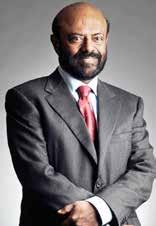
HCL’s recent acquisitions include businesses from Alstom, Deutsche Bank, the Godrej family-controlled software rm Geometric, and Butler America Aerospace, a defence and aerospace services rm. Nadar’s art collection is worth nearly $100 million.
CYRUS POONAWALLA $9 billion India
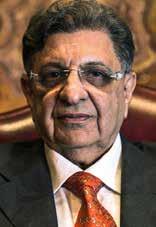

Pharmaceuticals
From owning stud farms in Pune, Cyrus Poonawalla and his brother Zavaray launched Serum Institute of India in 1966. It is is now the world’s largest producer of vaccines; every second child in the world is inoculated by a vaccine from SII. Its range of new vaccines includes one for dengue. Poonawalla has investments in real estate and hotels.
JULY www.indianlink.com.au
special feature
1
8 9 10
HINDUJA FAMILY $17 billion UK/Switzerland/India Various

The return of Iran – where their business took off –and the commissioning of a part of a agship power project in India’s Andhra Pradesh have boosted the multinational group that is run by four brothers, Srichand, Gopichand, Prakash and Ashok. They have also launched Nxt Digital, a digital television distributor, in India. Their existing businesses include India’s second biggest truck maker Ashok Leyland, British electric bus maker Optare, interests in Gulf Oil, the US chemical company Houghton and IndusInd Bank.
AZIM PREMJI $15.3 billion India Software

2 5
After his father’s death in 1966, Azim Premji had to cut short his studies in electrical engineering at Stanford University to take charge of the family business. He, then, transformed Wipro (an acronym for Western Indian Vegetable Products) from a seller of hydrogenated cooking fats, soaps and other consumer products into the third largest Indian software exporter. Named the most philanthropic Indian for three years straight, he has pledged 39% of his stake in Wipro to his Trust and has donated over $8.5 billion to charitable causes till date.
DILIP SHANGHVI $16 billion India

Pharmaceuticals
KUMAR MANGALAM
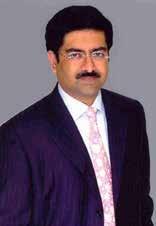
BIRLA
$8.8 billion
India
Aluminium & Cement
Hindalco Industries, a part of Birla’s Aditya Birla Group, is India’s second largest aluminium maker. Birla has expanded his presence in the cement sector by buying the rival Jaypee Group for $2.4 bn. Birla is a great-grandson of G D Birla, a pioneering Indian businessman in the 20th century.
A warning in the US about manufacturing standards had an adverse impact on Shanghvi, as did the $4 billion acquisition of rival Ranbaxy Industries. But Sun remains India’s biggest pharmaceutical company and the 5th largest generic rm in the world. It recently introduced a generic version of Gleevec, a cancer drug made by Novartis, in the US. (Because Sun Pharma’s stocks plummeted on account of regulatory issues and pricing pressure in the US, Shanghvi’s net worth has slipped to $11 billion from the time this list was originally compiled.)
PALLONJI MISTRY $14 billion India/Ireland Construction & Investments

3 6
The Mistry family is the the largest shareholder in India’s largest conglomerate Tata Sons. Mistry otherwise heads Shapoorji Pallonji Group, pioneering builders in India since the 1860s, credited with the creation of some of the country’s most iconic structures. Since the 1970s, the company has also had a signi cant presence in the Gulf. It is currently engaged in a $200 million venture to construct 20,000 affordable homes in India. Mistry, recipient of India’s third highest civilian award Padma Bhushan, is now an Irish citizen.
DAVID AND SIMON REUBEN $15.8 billion UK/Switzerland Property & Internet

UDAY KOTAK
$7.8
billion India Financial Services
Uday Kotak set up a small nance company Kotak Capital Management Finance in 1985, and converted it into Kotak Mahindra Bank with branches across India and of ces in London, New York, Dubai, Abu Dhabi, Mauritius and Singapore. It also has a stake in MCX, India’s largest commodities exchange. Last year, it acquired the rival ING Vyasya Bank.
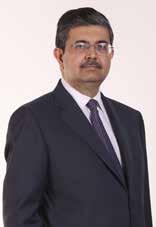
The Reuben brothers are Mumbai-born Jews. Starting in metals in the 1990s, they reportedly controlled 7% of the world’s aluminium trade. Their property portfolio includes prime buildings in London, as well as airports and heliports. They are leading investors in the UK’s Metro Bank and also own Global Switch, a data hosting company. Reubros and Aldersgate Investments, controlled by them, are estimated to be worth $14.4 billion. Their net worth has taken a hit because of the lower value of the pound after the Brexit vote.
LAKSHMI MITTAL AND FAMILY $13 billion UK Steel

4 7
As chief executive of the Luxembourg-headquartered ArcelorMittal, Lakshmi Mittal seems to be as strong as the steel he makes. After a $7.9 billion loss in 2015 due to an industry-wide crisis caused by over-capacity and dumping by China, the world’s largest steelmaker made a pro t of $1.8 billion in 2016. Mittal moved from Kolkata to Indonesia before settling in Britain in 1995, where he was declared the wealthiest person for eight years, but is now only 11th on the Sunday Times Rich List.
SUNIL MITTAL AND FAMILY

$6.3 billion
India
Telecom
Bharti Airtel, controlled by Sunil Mittal and his family with SingTel of Singapore, is the world’s third largest telecom company by way of subscribers. Airtel is engaged in a price war with Reliance Jio in the 4G data space. Airtel enjoys a presence in about 18 countries in Asia and Africa. Mittal has also recently launched Airtel Payment Bank.
JULY INDIAN LINK
11 12 13
GAUTAM ADANI AND FAMILY
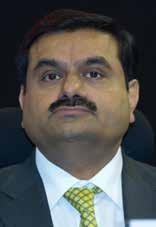
$6.3 billion
India
Infrastructure & Energy
Gautam Adani is known as much for his business interests in ports and power as he is for his close association with Indian Prime Minister Narendra Modi. In 2014, he acquired major ports in eastern and southern India. He has received approval for a coalmining project in Queensland but the plan has also raised environmental concerns.
ANAND BURMAN AND FAMILY
$5.8 billion
India
Dabur India Limited is one of India’s leading FMCG companies and the world’s largest in Ayurvedic and natural health care. Its products are available in 120 countries, with 30% of its revenues coming from outside India. Two-thirds of the company is owned by the Burman family, with Anand Burman as its chairman.
SHASHI AND RAVI RUIA
$6 billion
India
Energy, Telecom & Logistics
The Essar Group of the Ruias deals in marine construction, offshore support services, oil, steel and energy. In 2014, laden with debt, the group de-listed from the London Stock Exchange at a heavy discount as compared to its 2010 otation price. The group recently sold their Essar Oil and a port to Russian oil producer Rosneft.
RAHUL BAJAJ AND FAMILY
$5.7 billion
India
Motorcycles
Pioneers in making two-wheelers and threewheeler auto-rickshawswhich sell beyond Indian shores - Bajaj Motors is now run by Rahul Bajaj’s son Rajiv. Bajaj is also into home appliances, lighting, iron and steel, insurance, travel and nance. Rajiv’s recent remarks suggest that he is disillusioned with the Indian government.

BENU GOPAL BANGUR
$5.9 billion
India Cement
Inheriting an underperforming cement company in a family carve out in 1992, Benu Gopal Bangur turned it around. Kolkata-based Shree Cement has in recent years maintained its buoyancy despite bearish demand. Bangur is reputed to reside in a 51,000 square foot mansion which possesses a temple, home theatre, a gym and volleyball court.
VIKRAM LAL



$5.5 billion
India
Motorcycles
Eicher, which used to make tractors, switched to manufacturing motorbikes by acquiring a majority stake in En eld India. After growing more than 50% annually in India since 2010, it has partnered with Volvo to make trucks and personal utility vehicles. Vikram Lal, who oversees operations with his son Siddhartha, commands a 55% share of Eicher.
SRI
PRAKASH
LOHIA
$5.2 billion
India
Petrochemicals
Indorama is the world’s largest producer of polyester. In addition to Indonesia, it has production plants in Malaysia, India, Sri Lanka, Uzbekistan, Turkey and Senegal. In London, he and his wife Seema bought and restored a 1772 ve storey mansion known as Sheridan House for around $66 million.


PANKAJ
PATEL
$4.6 billion
India
Pharmaceuticals
Pankaj Patel’s Cadila Healthcare claims to have discovered a new drug for diabetes. Its Zydus Wellness division makes a popular sugar substitute called Sugar Free. It took a hit though when US authorities warned it of contravening manufacturing standards at two of its factories. 30% of its annual revenues come from the US.
SAVITRI JINDAL AND FAMILY
$5.1 billion
India
Steel, Power & Energy
Savitri Jindal took charge after the death of her husband Om Prakash in a helicopter crash in 2005, and delegated the four divisions of the company - steel, power, mining and oil and gas - to her four sons, Prithviraj, Sajjan, Ratan and Naveen. Apart from JSW Steel operated by Sajjan, the other businesses have declined.

SUBHASH CHANDRA

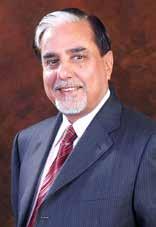

$4.5 billion
India
Media
The interests of Essel Group headed by Subhash Chandra, a BJP member of parliament, include the world’s largest speciality packaging company and amusement parks. But it is best known for its media-related business led by the Zee TV Group. Chandra’s Hindi channels are distributed in 169 countries, where they are watched mainly by overseas Indians and Pakistanis.
DESH BANDHU GUPTA
$4.9 billion
India
Pharmaceuticals
Lupin, founded by chemistry professor Desh Bandhu Gupta, is one of India’s top generic medicine rms and a global leader in anti-TB drugs. With its day-to-day running in the hands of his daughter Vinita and son Nilesh, it derives more than half its income from Japan and the US.

FEROZ ALLANA
$4.3 billion
UAE
Food
KUSHAL PAL SINGH
$4.3 billion
India
Real Estate
MICKY JAGTIANI
$4.3 billion
Dubai
Retail & Hotels
JULY www.indianlink.com.au special feature
14 15 16
17 18 19
21
23 24
20
22
25
Explore India with Jet Airways


India's premier international airline provides one of the finest experiences across the skies. Our high standards of service and reliability, efficient operations and focus on innovation has enabled us become one of India's favourite domestic and international airline. Discover more of the world as we fly you to 45 destinations within India.

JULY INDIAN LINK
free baggage allowance Through check-in Gourmet meals 1 Free date change Inflight entertainment Earn upto 4x JPMiles Free Stopovers Return Fares Include: To book, visit jetairways.com | mobile app | contact your travel agent. For any further information, please contact us: Telephone AU 1300 304 553 NZ 0800 555 158 Email – jetairways@airlinerepservice.com.au Address: Airline Rep Services. Level 18, Australia Square, 264 George Street, Sydney NSW 2000 Australia One of our preferred agents Tel: 0405545111 Add: Suite 1, 126 Marsden street, Parramatta, NSW, 2150
30kgs















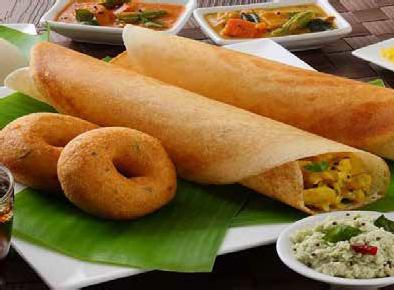

























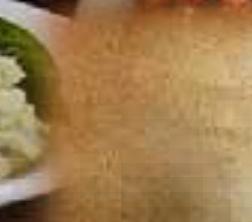


















JULY www.indianlink.com.au As good as mother’s cooking WE ARE SPECIALISED IN YAHAVA COFFEE, INDIAN MASALA CHAI, TRADITIONAL INDIAN TIFFINS, BIRYANI & CURRIES . ALSO AVAILABLE CONTINENTAL, FRESHLY BAKED MUFFINS, ROLLS, PASTRIES, SANDWITCHES , CAKES & DESSERTS. Shop 4, 139 High Road, Willetton. Ph: 08 6161 5549, FB: The Kauphy Place www.kauphy.com.au Open Everyday : 7am-9.30pm CAFÉ. DINE IN. FUNCTION CENTRE
Women’s business: The Aussie-Indian Women’s Expo

Community women gather for an inspirational event that looks set to become an annual occurrence
BY GRAHAK CUNNINGHAM
Bindiya Manchanda is hoping her women’s expo becomes bigger and better after a successful inaugural event at Herb Graham Reserve: Naari, The AussieIndian Women’s Expo 2017, which was held last month.


It celebrated the unique privilege of being women amongst two great cultures, Indian and Australian.
The event highlighted traditional and modern fashion, food, dancing and even offered free health check-ups throughout the day. The main aim was to connect the younger generation of Australian Indians with their history and culture.

The brainchild of Bindiya, an ISWA
management committee member wanting to empower women of Indian heritage, Naari gained momentum through the year as twenty-five women joined hands to create an inspirational event that would uplift and encourage Australian Indian women.

Monthly volunteer meetings turned into fortnightly then weekly gatherings filled with excitement as the vision came into fruition.
“Naari 2017 provided a platform to share our expertise, passion and skills,” said Bindaya.
Mirrabooka MLA Janine Freeman was amongst the guests visiting the Aussie Indian Women’s Expo, and was seen visiting the various stalls.
There were motivational speakers and musical performances to keep the crowds entertained, and workshops on Bollywood dancing and on ‘what to look for while buying diamonds’ for the people who were interested.
Next year’s event is already being talked about.
JULY INDIAN LINK
community
Multinational corporations earning Australian dollars now pay their fair share of Australian tax
The Australian Government is introducing new laws, closing loopholes and ensuring profits are taxed here. As a result, businesses both big and small can compete on a level playing field and recovered tax will benefit Australian communities and the economy.
Tax



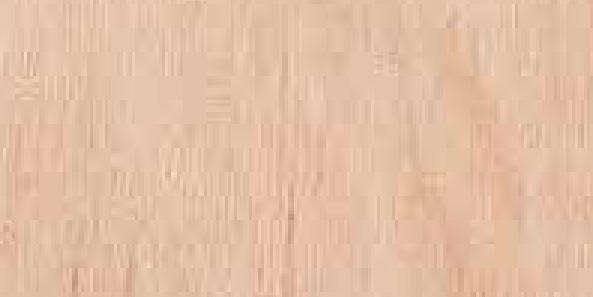



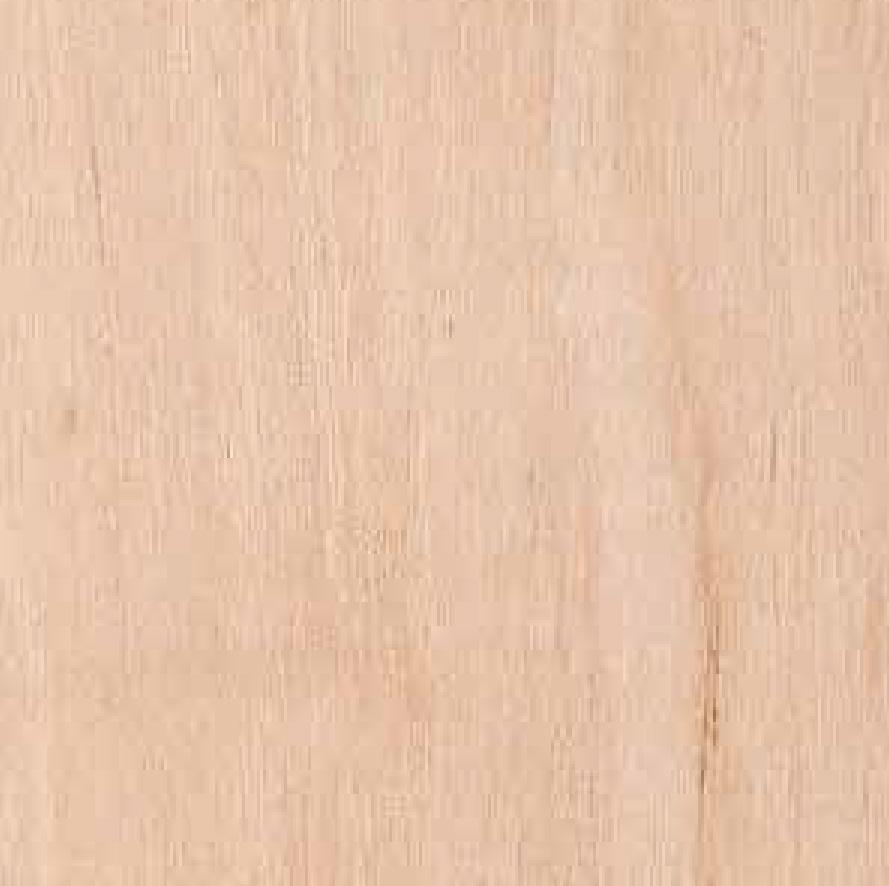

The taskforce and ATO have already issued bills of $2.9 billion to multinational corporations, and are expected to raise a total of $3.7 billion.
Multinational AntiAvoidance Law



































The MAAL prevents large multinational corporations from claiming profits were earned overseas, when they were earned in Australia.

JULY www.indianlink.com.au
Find out more at fairtax.gov.au Diverted Profits Tax From 1 July, large multinational corporations that move undeclared profits overseas will be penalised with a tax of 40%.
Avoidance Taskforce
Advertisement Authorised by the Australian Government, Capital Hill, Canberra.
Tomorrow’s leaders youth
An internship at Harvard University offers a unique perspective into what identity can mean in a globalised world

as “real” Australians. So, this leads me to question, where do I belong?
BY SARGUN BHATIA
Where are you from?
Australia. No, where are you really from?
Australia!
I have been asked this question many times in my life, with the same answer every time.
I, like many of my friends, am a thirdculture kid. Third-culture kids are secondgeneration Australians with parents from migrant backgrounds. Us third-culture kids simultaneously belong everywhere and nowhere. We grow up learning the delicate balance between maintaining our heritage and embracing our adopted country. But, I must admit, this takes its toll on our sense of identity. When someone asks where I am from, are they asking about me being from India, or Punjab, or Sydney? Does it really matter?
Many third-culture kids experience this cultural limbo, where we don’t fit into a certain cookie cutter shape. Indians write us off as NRIs, who aren’t “real” Indians. On the other hand, our brown skin and lunchboxes filled with parathas disqualify us
In our increasingly multicultural society, it is becoming the norm to realise that being Australian does not mean you have blonde hair and blue eyes. Rather, Australians are a diverse mix of cultures.


However, in this diverse mix, where do third-culture kids belong?
Recently, I attended a course at the most prestigious university, Harvard Law School. Here, I majored in ‘International Law’, and minored in the course of ‘Government and Politics’. Being the only Australian in this course, I had the privilege of representing our country. In my course, there were students from all continents, with representatives from South Africa, Pakistan, Spain, Lebanon, USA, Canada, Indonesia, and of course, myself from Australia. In this course, I learnt of the restrictive international laws that govern our world. By combining the experiences of my major and my minor, and the experiences of my classmates, I was disappointed to learn that unlike Australia, many countries are becoming somewhat hostile towards multiculturalism.

With the increase of terrorism and the influx of refugees, it is clear that there is a fear of the unknown. However, this fear should not propagate in our young generation. We are the leaders of tomorrow and it is frankly quite frightening to hear the international treaties being violated and
the rise of inhumane right-wing ideologies in our world. I know it is quite utopian, and to some extent naïve to hope for a world without discrimination, but as the voice of tomorrow, it is our responsibility to nurture multiculturalism.
In our course, we attended a lecture by Professor Randall Kennedy, who spoke about the rise of police brutality and the Black Lives Matter movement. Professor Randall Kennedy has taught at Harvard Law School for 33 years and has had high-profile students like both Barak and Michelle Obama. On further discussion with him, I learnt about the height of racial tensions in America, which is having a ripple effect across the globe. This can be seen in Australia in the marginalisation of Indigenous communities.
Although it was confronting learning of the rise of racial tensions globally, by representing Australia, I was pleased and proud of our unity in diversity. I will admit, we do have some thinly veiled xenophobia. However, based on our international relations, Australia is a leading example of cultural tolerance.
As the youth, we are fortunate enough to have all the tools to promote multiculturalism. We are all tech savvy. Social media is our best ally. In Australia, the rise of #illridewithyou after the Lindt Café Siege is a testament to our solidarity as a nation. By beginning at the grassroots levels, we must promote equality of all sorts
- gender, race, and sexuality. Children are born free of malice. Growing up introduces children to hate and discrimination. It is time to take these ugly behaviours out of our lives for good. Rather than simply legislative reform, we need social reform. We need to aim for a world where being black does not mean that you have a target on your head, being transgender does not mean that you are denied of basic facilities like bathrooms, being female does not mean that we get paid less. As a young brown female, I understand the discrimination faced by others. However, the most we do about this, is talk. Talking is not going to change anything. Glass ceilings remain rock solid. Aboriginal children remain ostracized. There has been enough talking. It is now time for action.
Going back to my initial lament about third-culture kids, by studying International Law, I realised that I have been mislabelling third-culture kids. We are not in any sort of cultural limbo. We are not third-culture kids. We are global citizens. Being of Indian descent yet Australian nationality gives my peers and I the power to be able to merge two cultures and embrace the benefits of both countries. As the leaders of tomorrow, we must showcase and build our international relations and increase tolerance to minorities.
In conclusion, I think the idea of a discrimination-free world is not utopian or naïve. It is in our hands. It is our future.
JULY INDIAN LINK

JULY www.indianlink.com.au 2 Shreeve Road, Canning Vale WA 6155 email: info@simranairtravels.com.au www.simranairtravels.com.au phone: 08 94552441 mob: 0425 111 041 (Ekam Singh) Please contact us for the Cheapest Air Tickets for • India • Pakistan • Nepal • Bangladesh • Sri Lanka • Singapore • Malaysia

JULY INDIAN LINK Up to 250 minutes to India Unlimited standard national talk and text Visit lebaraonline.com.au Not for commercial or resale purposes. For use in Australia. Lebara National plan $29.90 includes for 30 days; unlimited standard national talk, text & MMS (including 13, 1300 and 1800 numbers but excluding Pivotel); up to 250 standard international minutes for use to Canada, China, India and United States, di erent rates apply to other countries and may e ect international call minute value. Includes 5GB data, data sessions rounded to the nearest KB. Once data inclusion is exhausted, you will need to purchase a data pack or use main balance (excess data 7c/MB) to continue using data. Unused data and plan credit expires after 30 days. 1GB = 1024MB. See www.lebara.com.au/30-day-plans for specific rates to international destinations and other terms and conditions. Lebara reserves the right to amend or withdraw any plan inclusions, promotional o ers and/or pricing by giving at least 30 days’ notice on our website.
Scintillating Srikanth smashes it in Sydney
After winning the Aus Open badminton, India’s Kidambi Srikanth sets the bar higher for himself
Kidambi Srikanth couldn’t have asked for a better performance in the lead-up to the BWF World Championship of badminton to be held in August at Glasgow in Scotland.

On 25 June, the wiry shuttler extended his sterling form when he won the Australian Open badminton in Sydney. This was his second win in a week after winning the Superseries title in Indonesia. He also reached the finals in the Singapore Open.
And yet, he says his best is yet to come.
“I am really playing well. I am very confident and this is the best I ever played so far but the best is yet to come,” Srikanth said during a recent interview.
The Australian Open Superseries saw a change in fortune for the Indian after he had lost five times in a row earlier to reigning world and Olympic champion Chen Long, who won consecutive World Championships in 2014 and 2015.
“I beat him for the first time. I was very happy as I did it in a final of a Superseries,” the 24-year-old Srikanth said
The Guntur player, who defeated Chen 22-20, 21-6 in straight games, has also entered the top ten of the BWF men’s singles rankings for the first time in 10 months.
Srikanth is now the only Indian player to win the Superseries Premier, Superseries and Grand Prix Gold titles.
Hallmark of a champion
The Australian Open had a star-studded line-up, but Srikanth wasn’t one of them, certainly not at the start of the tournament. In fact, he was unseeded when the Australian Open began. But, with his stunning display of skill, grit and determination, he set the badminton world alight with a breathtaking exhibition of stroke play.
This was the 4th BWF Super Series title for the 24-year-old from Ravulapalem, Andhra Pradesh, who started off his professional career in 2008. At the peak of his career in 2015, Srikanth was ranked World No 3. The Hyderabad-based shuttler, who trains at the Gopichand Academy, had
made headlines first in 2014 when he won the China Open Super Series tournament against former World No. 1 and two-time Olympic champion Lin Dan (21-19, 21-17) in a historic upset.
He made it to the semi-finals of the Australian Open Super Series in 2016 and then backed it up with a quarter-final finish at the 2016 Rio Games where he stretched Lin Dan to three tight games. He had since slipped a few places due to a stress fracture induced break and currently occupies the 11th position in the World Men’s Singles Ranking which no doubt will improve further after Sydney success when the new rankings are released on 30 June.
Srikanth joined Indonesia’s Sony Kuncoro, Malaysia’s Lee Chong Wei, and the Chinese duo of Chen Long and Lin Dan to become only the fifth player in the world to have featured in three successive Super Series finals.
What makes the achievement even more special is the fact that Srikanth won the last two tournaments, a perfect preparation and huge boost for the forthcoming World
Championships in Glasgow in August. Sydney has been a happy hunting ground for Indians with Saina Nehwal winning the women’s singles crown in 2014 and 2016.
Flawless performance in Sydney
The badminton stadium at the picturesque Sydney Olympic Park on the cold wintry morning of 25 June 2017, was packed with thousands of Chinese supporters. However, a handful of vociferous Indians, waving the Indian tricolour and chanting constantly - ‘Jeetega bhai jeetega, India jeetega’ (India will win) - provided crucial moral support to Srikanth.
Undeterred by the 0-5 loss record against Chen Long, Srikanth pinned Chen to the back of the court and kept things tight until he chose his moment to attack.
“I was prepared for a long match and determined not to make simple mistakes and allow Chen Long take control,” he said in an informal chat after the match. While his performance was spectacular, his heartfelt gesture at the end of the match
JULY www.indianlink.com.au
sport
was even more special. After thanking his Indonesian coach Mulyo Handoyo, who also was beaming with joy, Srikanth ran onto the other side of court to hug Chen Long, exhibiting sportsman spirit, the sign of a true champion.

He was thankful to the support from the spectators. “Out of 16 tournaments we play in a calendar year, we play only two in India. But the way people supported me was superb. I felt like playing at home,” he told Indian Link.
Moments after Srikanth’s win and amongst the euphoric celebrations by Indian spectators, an ardent Indian badminton fan, Malvika, who travelled especially from Hisar, India, to witness the Australian Open, was almost in tears. “I was expecting Saina or Sindhu to win here. Srikanth brought tears in my eyes when he stepped on the podium to receive the trophy. It was a dream come true,” she said.
Srikanth thanked India’s chief national coach Pullela Gopichand, his other coaches and the physio for his success. He also had a word of praise for the facilities at the Sydney Olympic Park. “The stadium we played in was huge and perfect for badminton. The way they organised it is superb.”

“These two weeks were fantastic not just for me but also for (compatriots) HS Prannoy and Sai Praneeth. It was an unfortunate semi-final for Prannoy at the Indonesian Open. I would have loved to play the final with him,” said Srikanth. Prannoy shocked defending champion Lee Chong Wei of Malaysia in the prequarterfinal and defeated Chen Long in the quarter-final but went down fighting to Japan’s Kazumasa Sakai in the semi-final.
A promising future
Is Srikanth going to be a better badminton player than the legendary Prakash Padukone? Having won 4 Super Series titles already in the much more fierce competition in the present era, many would say he is the finest male player India has produced. However, he is still humble. “I don’t think I can compare myself with Prakash Sir or Gopichand Sir. I need to achieve a lot more to compare myself with them,” he said. If his achievements are signs of things to come, Indian fans can brace themselves for even more laurels in the coming months from Srikanth.
Yogendra Bhatnagar, Harshad Pandharipande and IANS
Rising Star Kidambi Srikanth

JULY INDIAN LINK
Year Tournament Opponent Score Result 2017 Australian Open Chen Long 22–20, 21–16 Winner 2017 Indonesia Open Kazumasa Sakai 21–11, 21–19 Winner 2017 Singapore Open B. Sai Praneeth 21–17, 17–21, 12–21 Runnerup 2015 India Open Viktor Axelsen 18–21, 21–13, 21–12 Winner 2014 China Open Lin Dan 21–19, 21–17 Winner BWF Grand Prix Year Tournament Opponent Score Result 2016 Syed Modi International Huang Yuxiang 21–13, 14–21, 21–14 Winner 2015 Indonesian Masters Tommy Sugiarto 21–17, 13–21, 22–24 Runnerup 2015 Swiss Open Viktor Axelsen 21–15, 12–21, 21–14 Winner 2015 Syed Modi International Kashyap Parupalli 21–23, 21–23 Runnerup 2014 Syed Modi International Xue Song 21–16, 19–21, 13–21 Runnerup 2013 Thailand Open Boonsak Ponsana 21–16, 21–12 Winner
BWF Super Series
‘‘
Srikanth joined Indonesia’s Sony Kuncoro, Malaysia’s Lee Chong Wei, and the Chinese duo of Chen Long and Lin Dan to become only the fifth player in the world to have featured in three successive Super Series finals
‘‘
Photos: Victor Yan/australianopenbadminton.com.au; Yogendra Bhatnagar
In a display of great sporting spirit, Srikanth gave his long-time nemesis, Chen Long, a hug after the match (left); with Yogendra – and the trophy (above)
cine TALK
are left behind to ght their own battles.
The lm is an adaptation of the 2015 released American war lm Little Boy Set in Jagatpur in Kumaon district and in the backdrop of the 1962 IndiaChina War, the lm is the tale of a dimwitted boy Laxman, whose brother, the only surviving member of his family, joins the Indian Army. How he survives during the interim period without his brother, forms the crux of the tale.
disappoints his fans. His mannerisms and body language are strongly reminiscent of Hrithik Roshan’s in Koi... Mil Gaya. His character is endearing but his physical demeanour is not. Initially jarring, but by the last act, you are one with the character and the actor. Salman de nitely grows on you.
TUBELIGHT

STARRING: Salman Khan, Sohail Khan, Zhu Zhu, Mohammed Zeeshan Ayyub, Yashpal Sharma, Matin Rey Tangu and Isha Talwar
DIRECTOR: Kabir Khan
HHHHH
PHULLU
STARRING: Sharib Ali Hashmi, Jyotii
Sethi, Nutan Surya, Inaamulhaq
DIRECTOR: Abhishek Saxena
I remember the rst time a woman actually mentioned she was having her period. She is a frank-speaking effervescent actress who always speaks her mind.
I pretended not to be shocked.
Phullu, played by that underused
Filmistaan actor Sharib Hashmi, has no such pretensions. Once he gets to know how women smother their painful menstruation days in unhygienic cloth and rags thereby inviting unmentionable infections, he makes it his life’s mission to introduce proper sanitary pads in his backward village.
Fine. We all have a mission in life. Some want to change the world by blowing up buildings and mowing down innocent pedestrians. Some just want to make a difference by easing the pain of human beings.
Phullu, the modern equivalent of a village idiot, will bring the sanitary
Salman Khan had once said, “Cinema should always be in touch with the soil of the country. My lms celebrate the heartland of India.” And probably with Tubelight, he tries to be true to his words. So, he has dedicated the lm to the families and friends of soldiers who
Visually, the lm is enthralling. The wide angle lens used by director of photography Aseem Mishra aesthetically captures the stunning locales to perfection. The music and background score further enhance the viewing experience.
Sohail Khan as his younger brother Bharat, has nothing much to offer, except being an emotional anchor for his elder brother, and he performs his part rather perfunctorily.
SHINES BUT WITH LOW VOLTAGE
But it is the wafer-thin premise, packed with motivational messages and a tinge of patriotic notes, that makes the plot seem forced. The script meanders with scenes that lack gravitas. A case in point is the scene when Narayan, one of the village bullies, throws Laxman who is walking along with his new friend Guo into a stream. And, when Laxman picks up a rock in defence and asks Guo to run, the assailants just whimper off, and the scene ends abruptly.
Salman Khan does not play the dynamic hero that he used to portray with gusto. As Laxman, he fails to exude energy onscreen and hence
SECRET WOMEN’S BUSINESS
napkin to the womenfolk of his village even if he is ridiculed, heckled and thrashed. His mother (Nutan Surya) calls her son a mauga (sissy) so many times that it could be his nickname.
But no, Phullu is not gay. Every man who is interested in menstruation is not gay. Cleverly, debutant director Abhishek Saxena has portrayed Phullu as a virile heterosexual whose marriage to the comely Bigni (Jyotii) triggers off a libidinous binge in Phullu and an antilibidinous outrage in his mother.

“She rubs herself with Lux soap twice every day and he keeps smelling her all day long,” the old lady complains to the neighbourhood gossip.
Phullu’s adoration of his wife reminded me of Nawazuddin Siddiqui in Manjhi: The Mountain Man, though this is far more sexed-up adoration. The use of an old Mukesh song Chand si mehbooba and a memorable romantic trip on a boat across a silent river, convey the love that this man feels for his signi cant other.
The dialogues are voluptuous and swarmy, the way the rural people speak when they talk about bodily functions,
specially sex. But some of the actors are clearly amateurs facing the camera for the rst time wearing newlypurchased, loud, unsophisticated saris to look their cheesy parts.
Whatever reservations one may have about the lm’s crude exterior and cruder contact points in the plot where Phullu addresses the menstrual issue, all our misgivings are blown away by Sharib Hashmi’s plot-de ning performance.
He breathes an unvarnished earnestness into Phullu’s part making us believe that a man can actually be this committed to accessing sanitary pads for women who can’t afford them.
Many sections of the lm, like the episode with the well-meaning press reporter (played by Namya Saxena) convey a coarseness of conception and
The only person who steals the show in the lm is Matin Rey Tangu as the young Guo, who Laxman befriends. He is charming with his oriental looks and impish demeanour. The Chinese actress Zhu Zhu plays his mother Liling with air.
Shah Rukh Khan in a cameo with his tattooed visage and ears studded with earrings, as a magician is dead pan and at. He does not help to uplift the narrative or add emotionally to the lm.
Om Puri as Banne Chacha, the guardian of an ashram, Isha Talwar as his daughter Maya, Mohammed Zeeshan Ayub as Narayan with his ‘knock knees’ and Yashpal Sharma as Major Tokras have their moments of onscreen glory.
Overall, Tubelight has the tempered magic of cinema but it fails to ignite the emotional quotient.
Troy Ribeiro
an inelegance of execution that make us cringe. But there is much heart to Sharib Hashmi’s role, and a genuineness about his character’s mission to make every woman’s time of the month, comfortable.
Phullu gets you not for any discernible cinematic qualities, but for just being what it is: a lm about a simple innocent rustic man who wants to make women comfortable. Period.
Subhash K. Jha
JULY www.indianlink.com.au entertainment
HHHHH
TAROT foretell














July will be a y-by month! As the winds subtly alter, we seek a gentle adjustment of the sails to steer us onward through the second half of the year. There is a promise of things unfolding, developments that hint at how 2017 will shape up for each of us. Observe how your circumstance card aligns with the signi cator card to lead you to a glimpse of this happy culmination.
ARIES
March 21 - April 19
Harmony! That’s the key word for you this month, Aries. As family affairs engage you, your focus remains on guarding the happiness your loved ones bring you. Togetherness is your priority and you sync the home action like a maestro. The Sun shines bright on all you do and you excel in truly Arian alpha style. With the Queen of Wands gracing you with determination, you nd new ways to create your own sunshine and to bring sunshine to others.
LEO
July 21 - Aug 22
You’re regal, Leo, there’s no doubting that! You’ve got that certain something that makes people value you for your kindness and thoughtfulness as much for your brilliance and wisdom. A natural-born leader, you work hard for yourself and your image. The World with the Two of Cups shows that you truly are loved by Fortune and you may receive an honour related to your work. Any acknowledgement accorded to you will have you, very generously, sharing credits with teammates.


SAGITTARIUS
Nov 22 - Dec 21
TAURUS April 20 - May 20
You like to learn, Taurus, so do not hesitate to tap unconventional sources of wisdom this month. It’s not always the older and wiser that may have the answers! You work hard to gain understanding and widen your perspective. The Hierophant in your reading shows that you might bene t from seeking guidance. A legal matter or real estate issue may have weighed on your mind lately. The Ten of Cups brings you the possibility of a happy resolution soon.
VIRGO Aug 23 - Sep 22
Too many choices in July for you, Virgo. Should you be in a partnership, you may consider having an additional person on board. And which should it be - person A or person B? Whom to advertise with or whom to consider for a position at work - this month throws up things in threes! Some days it will be tough, but you build your path as you make your choices. The Lovers card beckons you to choose with wisdom.
GEMINI
May 21 - June 20
Quicksilver. That’s you. Especially this month. Weaving your trademark wit across all realms of activity, you scout for that which remains un nished and pick it up with passion. Wakeful nights do not deter you and you continue your zestful toil. The Judgement card with the Knight of Swords suggests caution and slowdown. Versatile as you are, even Geminis can be pulled in more directions than they can cope with. Watch out for signs of stress and get that beauty sleep.
LIBRA
Sep 23 - Oct 22
If you’ve been by yourself lately, Libra, it’s time for you to take the initiative. Connect with old friends or family members you haven’t seen in a whilethe people who genuinely care for you. A weekend away from usual surroundings will prove to be therapeutic for your gentle Venus-ruled self. July brings you success in your work especially if it pertains to writing, publishing, teaching or public speaking. New additions to your repertoire will be well appreciated!


CANCER June 21 - July 20
Strength and attainment are yours this month, Cancer. The power of The Empress is with you to claim so you must continue to persevere even if things have seemed to be a tad slow. Whether your project is planning a wedding or a corporate coup, this is a great time to get yourself primed for the task. The Two of Wands indicates that research, creative ideas and logical reasoning will stand you in good stead. Attainment crowns your sincere endeavours.
SCORPIO

Oct 23 - Nov 21
You are brilliant this month, Scorpio, and you know it! Your depth of knowledge and creative ideas fetch you an enviable place in the spotlight. As always, you soar like an eagle but stay connected with your spiritual side. People nd you at your charming, social best and you experience a memorable time with your partner towards the end of the month. The Emperor signi es that you enjoy a position of authority or that someone powerful recognises your speci c talents.

CAPRICORN
Dec 22 - Jan 19
AQUARIUS
Jan 20 - Feb 18
Oh, Saggi! You’re letting duties weigh you down. Perhaps a relook at your lifestyle is overdue? Consider the top three things that are going by the wayside as you throw yourself into a mode of overwork. They are what you need to rescue soonest. You like a spot of action so get a bit of sport into your life - cycling, jogging or just stepping on the treadmill! The end of July brings you money that was due to you.
Slow and steady you always are, Capricorn, bringing to balance your need for security and adventure. This you accomplish with aplomb in July. A tiny holiday connected with business midmonth is likely. You may also be guided to re ect on issues outside of your sphere. People will approach you for advice as they know you’re reliable. A bit of news may be the element of pleasant surprise that leaves this month a lot sweeter than you imagined at the outset.




You have been on an exploration of your inner world, Aquarius, and happily lost in your thoughts. People may be a bit mysti ed by the quiet and withdrawn you. When you do emerge from your space, watch for the second half of the month that is awash with excitement. A fresh outlook or new slant in a conventional landscape will mark a sudden movement and you will feel the excitement of newness within. Be cautious but do continue with your explorations.
PISCES


Feb 19 - March 20
“I am, I said” is your song this month. As you have two sh point you in different directions, Pisces, you will hum a tune and get yourself up from whatever has been keeping you down. Once you are up and out there, hold on to your dreams and silent ambitions. Mould your actions accordingly. You are stronger than you believe and the King of Wands heralds you to take a stand for yourself for you have impeccable stellar support.
JULY INDIAN LINK
VANDANA
JULY 2017 BY
Everybody loves you until you become competition
DEAR AUNTYJI
I have been working very hard at work, and have been getting on very well with my colleagues, including my peer Santosh. So I got offered a promotion and noticed that Santosh has been a bit standof sh with me. Further, he makes sarcastic comments to me also. Now because of my promotion, my previous role has opened up, and my manager suggested Santosh. I told my manager that Santosh was being a bit of a dick to me and my boss indicated that Santosh had indicated that he was better suited for a promotion because he was more technical than I am. When I heard this, I was gobsmacked. And I can’t believe he would plunge the kanjar in my peeth like that. So now my old pet project is being handed to Santosh, and I don’t know how I feel. I feel that he is getting rewarded despite being spiteful and small-minded. What should I do
Auntyji, I really don’t like these feelings of resentment.

AUNTYJI SAYS
Congratulations on your tarakki and I am sure there are many more successes coming your way. As for Santosh, yes, he appears to be a bitter, jealous, spiteful, small man, and he won’t get far with that attitude. Everyone will see him for what he is. As for how you feel - this is totally legitimate. I can understand why you feel this way, my little gulabo. So if I may quote the illustrious Mrs Obama, when they go low, we go high. So in this instance, understand that you will accept your feelings of resentment and soon they will be replaced by other feelings. I suggest you continue to be totally professional to Santosh. Let life take care of him. People with resentment and envy never get ahead. And if they do, the universe always has a delicious lesson ahead for them. So continue to work hard and focus on your new role. Let Santosh be Santosh. Sooner or later he will be found for the haraami that he is. May the black dog bite him in his sleep. What kind of ^%&*$#@ tries to get ahead by poking the kanjar in the peeth of a colleague.
Coping with divorce

DEAR AUNTYJI
My beloved son is getting divorced. I am heartbroken. My two grandkids are the innocent victims in this. My formerly beloved daughter-in-law is now turning against us all. She is now complaining that when the kids come over, they are fed rubbish and consequently have stomach aches etc when they go home. I am so saddened by all this because none of this was an issue for 10 years. Now everything is a problem. Auntyji, I am at my wits’ end. I am trying so hard not to see faults anywhere but things are getting worse. I want to see my grandkids and feel it is my right. But the situation is not getting any better. My son is also heartbroken. Can you please tell me what we should do?
AUNTYJI SAYS

ask AUNTYJI MATRIMONIALS

SEEKING BRIDES
Well-settled professional match invited for Sydney-based Punjabi girl. Never married 43/5’6” Masters in IT from Sydney. Jolly nature, good mix of Indian and modern values. Working in an MNC. Australian citizen. Educated family. Parents in Delhi. Respond with photo and pro le to sydgirl09@gmail.com
Seeking professional match for Australian born and brought up Hindu Brahmin girl. Chartered Accountant, 25 years old, 5’4”, working with a bank. Family well settled in Australia for over 27 years. Prefer boy settled in Australia. Please send details with photo to fairfree1@mail.com
Match required for my sister. Australian citizen, Hindu Punjabi, non-vegetarian. 5’0, slim, fair, beautiful. 1988-born, Masters of Professional Accounting, working in Melbourne. Australian Citizen or PR required. Email to melbournejodi@yahoo.com
Seeking professionally quali ed settled match for Sydney-based, never married Australian citizen. Hindu, Punjabi Khatri 44, 5’3” slim, fair, attractive. The girl is a postgraduate and is working on a good position in a government organisation. Please send details with photo to indsyd2016@gmail.com
SEEKING GROOMS


Well-settled professional match invited for Sydney-based Punjabi girl. Never married 43/5’6” Masters in IT from Sydney. Jolly nature, good mix of Indian and modern values. Working in an MNC. Australian citizen. Educated family. Parents in Delhi. Respond with photo and pro le to sydgirl09@gmail.com
Seeking professional match for Australian born and brought up Hindu Brahmin girl. Chartered Accountant, 25 years old, 5’4”, working with a bank. Family well settled in Australia for over 27 years. Prefer boy settled in Australia. Please send details with photo to fairfree1@mail.com
Match required for my sister. Australian citizen, Hindu Punjabi, non-vegetarian. 5’0, slim, fair, beautiful. 1988-born, Masters of Professional Accounting, working in Melbourne. Australian Citizen or PR required. Email to melbournejodi@yahoo.com
Seeking professionally quali ed settled match for Sydney-based, never married Australian citizen. Hindu, Punjabi Khatri 44, 5’3” slim, fair, attractive. The girl is a postgraduate and is working on a good position in a government organisation. Please send details with photo to indsyd2016@gmail.com
Yes, this is a terrible situation you are in - and there are many people hurting at the moment. Ok, so look at it from your DIL’s point of view. Her life is slowly falling to pieces. She is hurting. And she is probably not coping well. In this



situation, you can’t make demands such as it is my right to see my grandkids. If you really loved your family, which includes the mother of your grandkids, here is what you would do. Back away, and leave them alone. Let your DIL grieve for a while. Do not interfere or take sides. Do not request or demand to see your grandkids. Give them all time to get over this life challenge. You will need to put a stone on your heart to get through these months. If you can, have a word with your DIL and let her know what you will give her time, and you are there for her. When she is ready, she can bring the kids for a visit. And if DIL is ok, then maybe you will prepare a meal for the kids. But you need to make a few sacri ces here, for the sake of the family. An unhappy mother is a terrible thing for kids - so don’t let your grandkids see their mum as unhappy. Never ever speak badly of her. Do not take sides between your son and DIL. This is a no-win situation. And whatever you do, don’t start giving your son your two-paisa worth of advice. He does not need it. Unless you are echoing the words of saints such as be kind and don’t ever let a nasty word escape your mouth. You get my drift. Hang in there. It will get better. But you need to work towards it. Let me know how you go.

JULY www.indianlink.com.au
backchat
INDIAN LINK SOCIAL MEDIA subscribe to our channel /IndianLinkAustralia @indian_link indian link

JULY INDIAN LINK


JULY www.indianlink.com.au Send love. Save money. Transfer money to India from just $3.50* moneygram.com.au /moneygram *$3.50 fee applies to sends up to $100 for cash pick up. A higher consumer fee will be charged for send amounts which exceed $100. In addition to the fee, a currency exchange rate may also apply. MoneyGram also makes money from currency exchange. MoneyGram and the Globe are marks of MoneyGram. All other marks are the property of their respective owners. © 2017 MoneyGram. And anywhere you see the MoneyGram sign. 1800 049 087




































































































































































































































































































































































































































































































































































